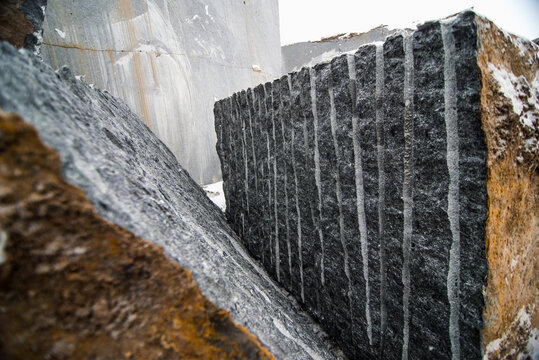Discovering the Rich Background and Lasting Practices of Granite Quarrying
As we depend on the precipice of revealing the complex tapestry of granite quarrying, a trip via time exposes not simply the physical act of drawing out rock however additionally the social and historic significance woven right into the extremely fabric of this technique. From the old beginnings that laid the foundation for modern quarrying strategies to the sustainable practices that are shaping the future of this market, each sculpt mark on granite surfaces informs a story waiting to be uncovered (granite quarries in south africa). The heritage of granite quarrying stretches far past simple extraction; it is a testament to human resourcefulness, strength, and the long-lasting allure of this marvelous rock
Ancient Beginnings of Granite Quarrying
Dating back to ancient worlds, the method of quarrying granite has actually been an indispensable component of human history and architectural development. The earliest evidence of granite quarrying go back to ancient Egypt, where massive pyramids and complex sculptures were crafted from this long lasting stone. The Egyptians utilized primitive tools to remove granite blocks from quarries, showcasing the importance of this product in their huge building and constructions.
Moving on in background, the Greeks likewise made significant payments to the quarrying of granite. The Greeks made use of granite in various architectural wonders, such as holy places and sculptures, showing their ability in shaping and sculpting this hardy rock. The Romans additionally fine-tuned the strategies of quarrying granite, utilizing sophisticated devices like knives and hammers to remove and form granite for their iconic structures.
With the centuries, the method of quarrying granite has actually advanced, with modern-day technologies improving effectiveness while keeping the classic allure of this all-natural stone - granite quarries in south africa. From ancient civilizations to contemporary contractors, the heritage of granite quarrying proceeds to shape our world
Evolution of Quarrying Techniques
The evolution of quarrying strategies has actually been noted by a constant development in the direction of better efficiency and accuracy in extracting granite. From the simple techniques used by our forefathers to the innovative innovations utilized in modern-day quarrying procedures, the sector has actually undergone significant improvements. Early quarrying methods involved manual labor with standard tools such as chisels, hammers, and wedges to remove granite blocks from the earth. As civilizations proceeded, strategies like fire-setting and primitive nitroglycerins were presented to promote the extraction procedure.
Advancements in computer-controlled devices and 3D modeling have actually maximized quarrying operations, leading to minimal ecological influence and improved sustainability practices. As the need for granite continues to increase, the development of quarrying methods continues to be integral to meeting industry needs successfully and sustainably.
Cultural Importance of Granite
Granite holds a profound cultural relevance across various worlds due to its enduring view it existence in architectural masterpieces and admired monuments. From the magnificent pyramids of Egypt to the elaborate makings of the Angkor Wat holy place in Cambodia, granite has been a product of selection for sharing majesty and long life in cultural heritage. In old Rome, granite columns decorated temples and public buildings, representing strength and permanence. The cultural relevance of granite expands beyond its physical features; it symbolizes resilience, stability, and timelessness, making it a symbol of sustaining heritages and traditions.

Lasting Practices in Quarrying
Among the abundant history of granite quarrying and its cultural importance exists a growing emphasis on sustainable practices within the sector. As environmental awareness and concerns regarding source exhaustion have enhanced around visit homepage the world, the quarrying field has actually progressively accepted lasting techniques to reduce its effect on the environment and surrounding communities.

Additionally, improvement and rehabilitation of quarry sites post-extraction are integral to lasting techniques. By recovering quarried areas to an all-natural or advantageous state, such as creating wild animals environments or recreational areas, quarriers can balance out the ecological impact of their operations and add positively to the local environment.
Legacy of Granite Quarrying
With a historical backdrop steeped in workmanship and commercial development, what sustaining influence has granite quarrying left on the landscape of modern-day society? The tradition of granite quarrying transcends simple extraction practices; it has shaped building marvels, urban landscapes, and cultural heritage worldwide. The sturdy nature of granite has actually made it a recommended choice for monuments, link buildings, and facilities, standing as a testament to the skill and creativity of quarry workers across generations.
Moreover, the financial impact of granite quarrying can not be ignored. The industry remains to give employment possibility and drive local economies in areas where granite extraction is common. It has actually likewise spurred technical innovations in quarrying techniques and devices, causing extra reliable and sustainable methods.
In terms of sustainability, the legacy of granite quarrying includes initiatives to minimize ecological influences via recovery jobs and accountable resource monitoring. By balancing economic passions with ecological stewardship, the industry aims to guarantee that future generations can remain to gain from this enduring natural resource.
Conclusion
